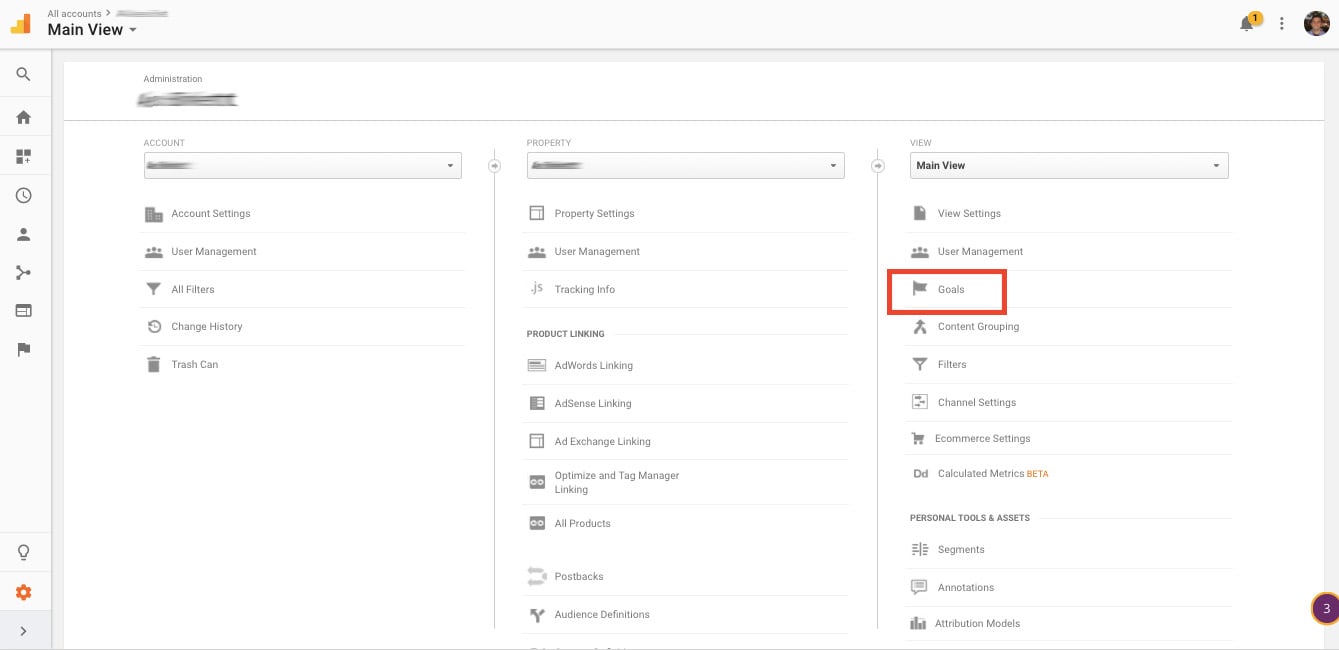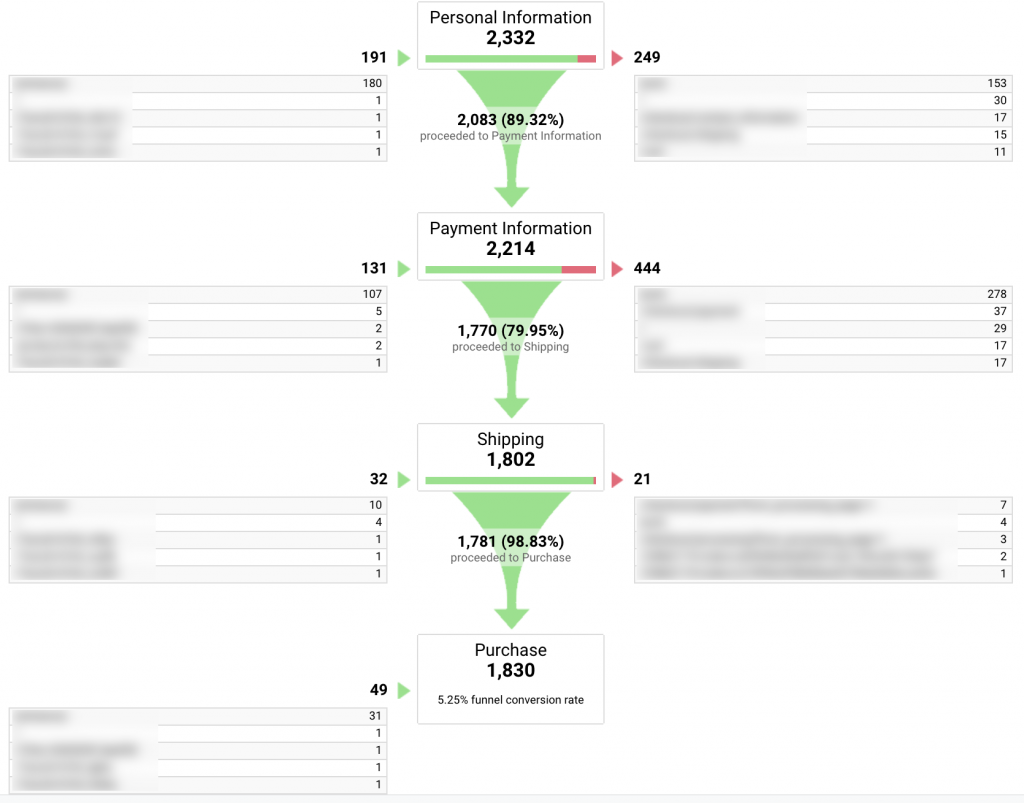Exploring What Data Is Google Analytics Goals Unable to Track
Exploring What Data Is Google Analytics Goals Unable to Track
Blog Article
Discover the Limitations of Google Analytics Goals: Introducing the Data Types That Remain Untrackable
As companies increasingly depend on data-driven decision-making, recognizing the limitations of tools like Google Analytics comes to be critical. While Google Analytics Goals offer beneficial insights right into user communications, there exist data kinds that avoid tracking, presenting obstacles to a comprehensive understanding of customer behavior.
Incomplete Individual Journey Tracking
Insufficient customer trip monitoring within Google Analytics can hinder the capacity to properly examine customer actions. When the user trip is not totally tracked, there are spaces in the data that protect against a thorough understanding of just how users communicate with a site. This absence of insight can bring about missed opportunities for optimization and enhancements to the customer experience.
One common concern with insufficient customer trip monitoring is the inability to see the full course that individuals take in the past completing a goal or leaving the site. Without this details, it is testing to determine where users might be coming across obstacles or friction points that avoid them from transforming. Additionally, insufficient monitoring can cover the impact of particular advertising and marketing efforts or site modifications on user actions.
To resolve this restriction, it is crucial to set up appropriate monitoring mechanisms within Google Analytics to capture the entire customer journey. This may include establishing up event monitoring, goal funnels, or utilizing devices like Google Tag Supervisor to guarantee that no crucial communications go unrecorded. By gaining a detailed sight of the user trip, website proprietors can make even more enlightened choices to boost user interaction and drive conversions.
Attribution Obstacles
Navigating through attribution obstacles in Google Analytics calls for a detailed understanding of how different touchpoints contribute to the total conversion process. Acknowledgment challenges arise from the intricacy of contemporary customer journeys, where users communicate with several channels before converting.
One usual attribution difficulty is the problem in associating conversions to the right resource, especially in instances where individuals interact with numerous channels prior to converting. This can result in mistakes in identifying which advertising initiatives are driving one of the most conversions. Furthermore, cross-device tracking poses an additional attribution challenge, as users typically change between tools throughout their journey, making it challenging to track their communications effortlessly. Marketing experts have to very carefully analyze and evaluate acknowledgment data to make enlightened decisions and enhance their advertising and marketing approaches successfully.
Offline Conversions
Given the difficulties associated with associating conversions accurately in online channels, the measurement of offline conversions presents a considerable opportunity for marketers looking for a more detailed understanding of their clients' journey. Offline conversions describe activities that clients take in the real world, such as making acquisitions in brick-and-mortar stores or over the phone, going to occasions, or involving with published materials - what data is google analytics goals unable to track. These conversions are vital for services that operate both online and offline, as they provide valuable insights into the efficiency of advertising and marketing campaigns across various touchpoints
Tracking offline conversions traditionally positioned a significant challenge for marketing professionals, as it was challenging to connect these activities back to certain on the internet interactions precisely. With improvements in technology, such as the assimilation of CRM systems, distinct identifiers, and promo code codes, services can now bridge the gap in between online and offline data to obtain an extra alternative sight of customer behavior. By efficiently determining offline conversions, marketing professionals can enhance their techniques, allot sources much more successfully, and inevitably improve the overall consumer experience.
Cross-Device Monitoring
Cross-device monitoring plays a crucial function in understanding the interconnected nature of consumers' digital communications across numerous gadgets. In today's omnichannel globe, where customers effortlessly switch in between tablet computers, desktop computers, and smart devices, tracking their actions across these gadgets is essential for marketing experts to obtain a comprehensive sight of their customer trip.

Moreover, personal privacy problems and laws such as GDPR and CCPA have better complex cross-device monitoring. With users demanding even more control over their information and boosted restrictions on tracking modern technologies, online marketers need to discover cutting-edge and privacy-compliant means to attach customer communications throughout gadgets.
Dynamic Material Interaction
Comprehending customer interaction with vibrant content is pivotal in optimizing digital marketing techniques for enhanced audience communication. Dynamic material refers to site aspects that change based upon user behavior, preferences, or other variables, offering a personalized experience. Nevertheless, tracking customer interactions with vibrant web content positions obstacles for standard analytics devices like Google Analytics.
While Google Analytics can track fundamental communications like clicks and page sights, it may battle to record more nuanced engagements within dynamic content. what data is google analytics goals unable to track. Metrics such as time invested in specific vibrant aspects, float this page actions, or interactions within pop-ups are often not conveniently measurable making use of conventional tracking techniques. This limitation prevents marketing experts' capability to my sources totally comprehend how customers are engaging with vibrant content and tailor their strategies appropriately

Final Thought
Finally, Google Analytics objectives have limitations in tracking incomplete user journeys, associating conversions accurately, capturing offline conversions, tracking cross-device communications, and determining dynamic web content engagement. These constraints highlight the significance of discovering additional monitoring approaches and devices to get a much more comprehensive understanding of user behavior and conversions beyond what Google Analytics can offer.
While Google Analytics Goals deal beneficial understandings right into customer communications, there exist information kinds that avoid tracking, helpful site presenting obstacles to a thorough understanding of user habits.Incomplete individual journey tracking within Google Analytics can prevent the capability to precisely evaluate individual behavior. When the customer journey is not fully tracked, there are gaps in the information that protect against a thorough understanding of just how individuals interact with a website.One usual problem with incomplete customer trip tracking is the inability to see the complete course that users take in the past completing an objective or leaving the website. By obtaining a detailed view of the individual trip, website proprietors can make more informed choices to improve customer interaction and drive conversions.
Report this page